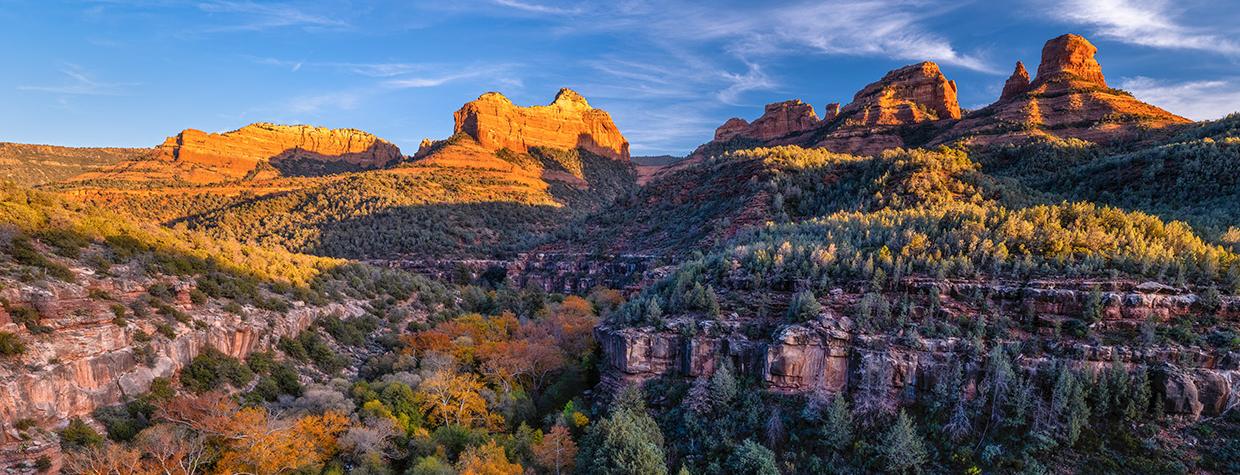Havasu Canyon
Our land is a mighty cathedral in color, full of sunshine and purple mountains and with big, lazy clouds hung in the sky like billowy windows to draw your eyes high toward Heaven.
History’s silken threads have spun a story of romance and courage and adventure about our desert and our hills, our mesas and our mountains, adding luster to the scene.
Our land is the Past and the Future. Our land is Tomorrow, tempered and softened by the gentle lessons of Yesterday. The story of our land is found in antiquity’s lexicon and in the golden promise of achievements that will come.
Our land is Today. Its song is in the music of silvery blue water tumbling over the cliffs in Supailand. The song of our land is the wind bending the mesquite and the ironwood, the fingers of the breeze rustling the leaves of the cottonwood and the sycamore and the aspen. The song can be heard in the heavy clump, clump of the buffalo living out their destiny in House Rock Valley and in the noise of the brahma herds pawing the desert floor around Gila Bend.
You hear the song of our land in the old, old chant of the Navajo, and you hear it on the high Kaibab Plateau where a startled fawn rushes through the undergrowth. It is in the splash of trout playing in the waters of Bright Angel Creek and in Oak Creek.
Our land is a thing of poetry and beauty. The Grand Canyon is a sonnet written by time and the river, each line the achievement of a million years of nature’s careful best; and what delicate composition has been put into the Wonderland in the Chiricahuas!
Rainbow Bridge is verse in stone, a creation of the gods in a poetic mood. Monument Valley, Aravaipa Canyon, San Francisco Peaks, Sabino, the Santa Cruz Valley and all the other enchanted miles that make up the broad acres of our land are verses in the divine epic.
The first travelers came our way in the early 16th century, with adventure and discovery their reward. The sleepy years have not dimmed their sense of adventure and discovery that is the reward of all travelers passing through our land today.
Our land is a magic place where a mere sunset is grandeur, where the very air could be bottled and sold as tonic, where the habit of living acquires a certain zestful vigor.
Our land is a place called “Arizona.”
— Raymond Carlson, December 1941
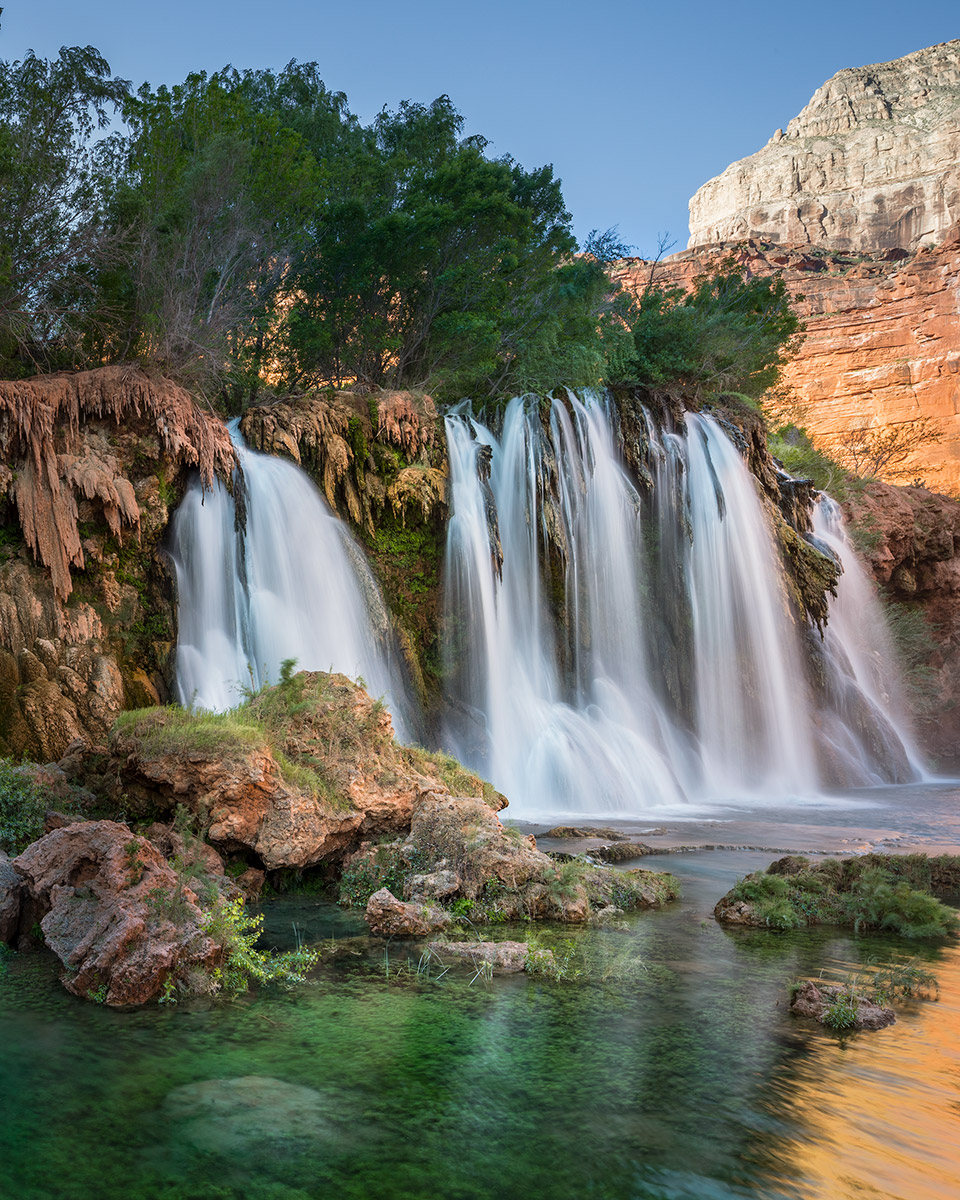
The blue-green water of Havasu Creek nourishes riparian plants as it flows over Upper Navajo Falls. This waterfall, one of several that serve as destinations for Havasu Canyon visitors, is also known as New Navajo Falls because it was created by a landslide in 2008. The above photo shows the old Navajo Falls, which was bypassed by the landslide.
SUZANNE MATHIA
INFORMATION: Havasupai Tribe, theofficialhavasupaitribe.com
SEDONA
“We had a wonderful life there. It was absolutely marvelous. Words fail me when I try to describe it. The climate was wonderful. The people we met there were so different from the sophisticated New Yorkers. They were simply terrific cowboys or artists.”
— Max Ernst, artist and Sedona resident in the 1940s and ’50s
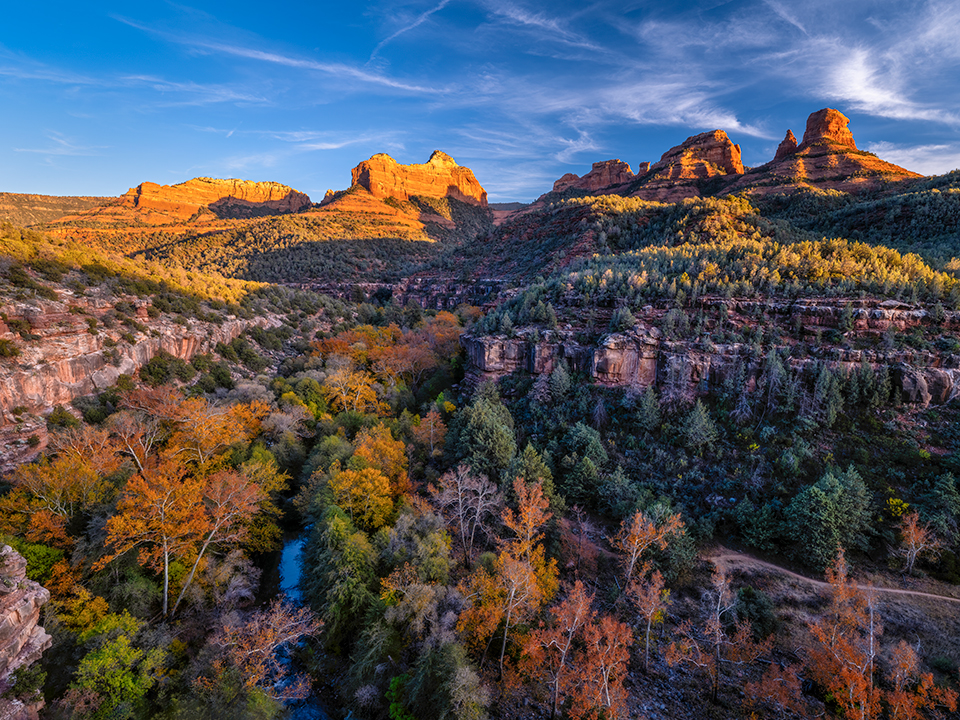
Autumn color mingles with Red Rock Country sandstone in a lower section of Oak Creek Canyon. Numerous hiking trails in the canyon offer an up-close look at the oaks, maples, walnuts and other deciduous trees along Oak Creek, where fall hues typically peak from mid-October to early November. A $5 Red Rock Pass is required to park at many of the canyon’s trailheads.
GUY SCHMICKLE
INFORMATION: Red Rock Ranger District, 928-203-2900 or fs.usda.gov/coconino
ARAVAIPA Canyon
“ ‘The world is big, but it is comprehensible,’ says R. Buckminster Fuller. But it seems to me that the world is not nearly big enough and that any portion of its surface, left unpaved and alive, is infinitely rich in details and relationships, in wonder, beauty, mystery comprehensible only in part. The very existence of existence is itself suggestive of the unknown — not a problem, but a mystery. We will never get to the bottom of it, never know the whole of even so small and trivial and useless and precious a place as Aravaipa. Therein lies our redemption.”
— Edward Abbey, “The Serpents of Paradise: A Reader,” 1996
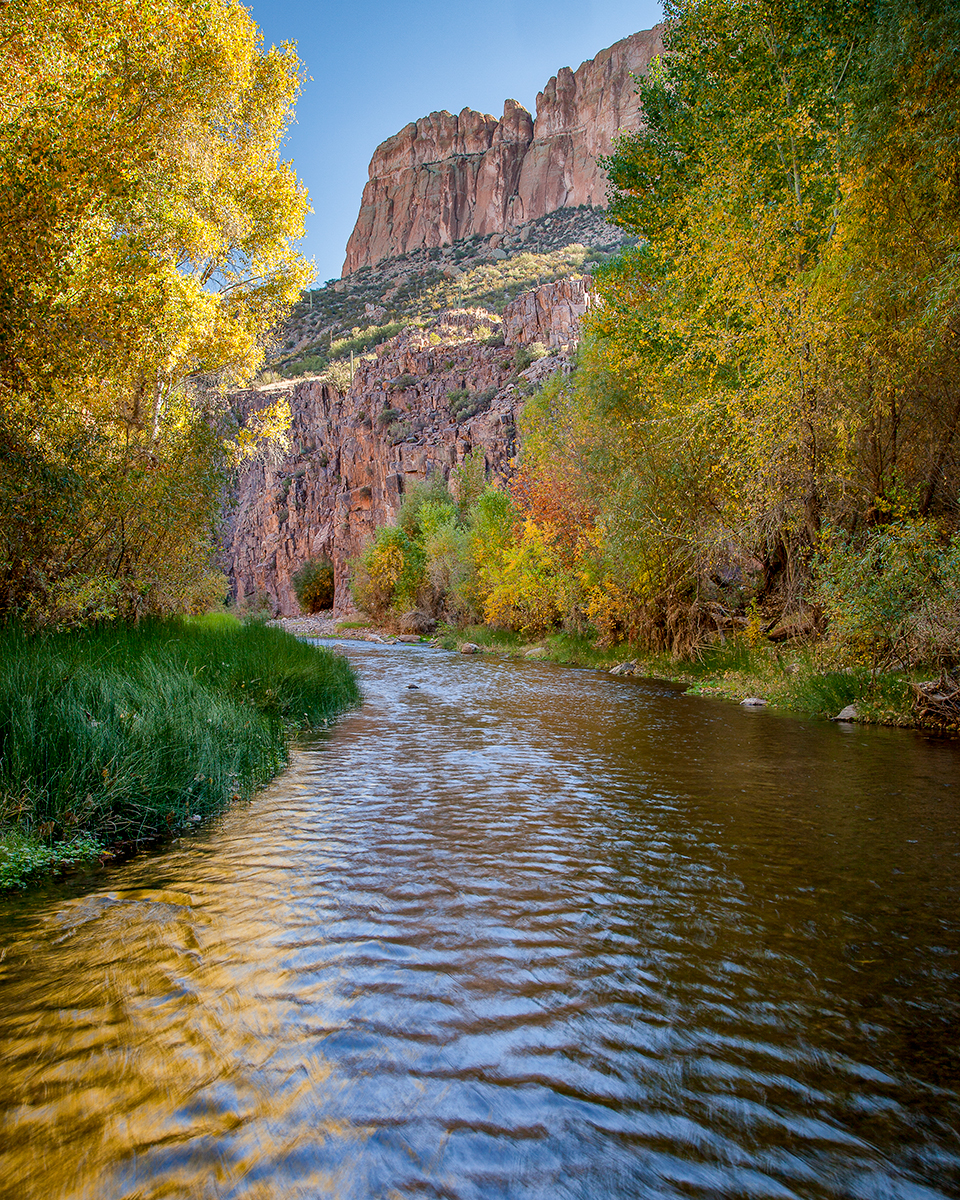
On a cool November morning, the rippled water of Aravaipa Creek reflects the colors of autumn. This spot is in the Aravaipa Canyon Wilderness, which is managed by the Bureau of Land Management. To protect the wilderness area’s natural beauty, permits to visit it are limited to 50 per day — 20 from the east and 30 from the west.
JEFF MALTZMAN
INFORMATION: Safford Field Office, 928-348-4400 or blm.gov/arizona (general information); recreation.gov/permits/251864 (permits)
RAINBOW BRIDGE
“I draw in retrospect some sketchy notion of that amphitheater where Rainbow Bridge is flung up, a perfect symphony in pink sandstone, to unfold like a scroll thwartwise of the canyon’s structure, which, by contrast, is streaked with less graphic tones — umber and amber and ochre and tarnished copper. But with no vain ornamentations to mar the surpassing grace of it, mind you; no superfluous curlicues to distract the fascinated eye from those altogether simple and most truly scaled lines.”
— Irvin S. Cobb, American journalist, author and humorist, July 1940
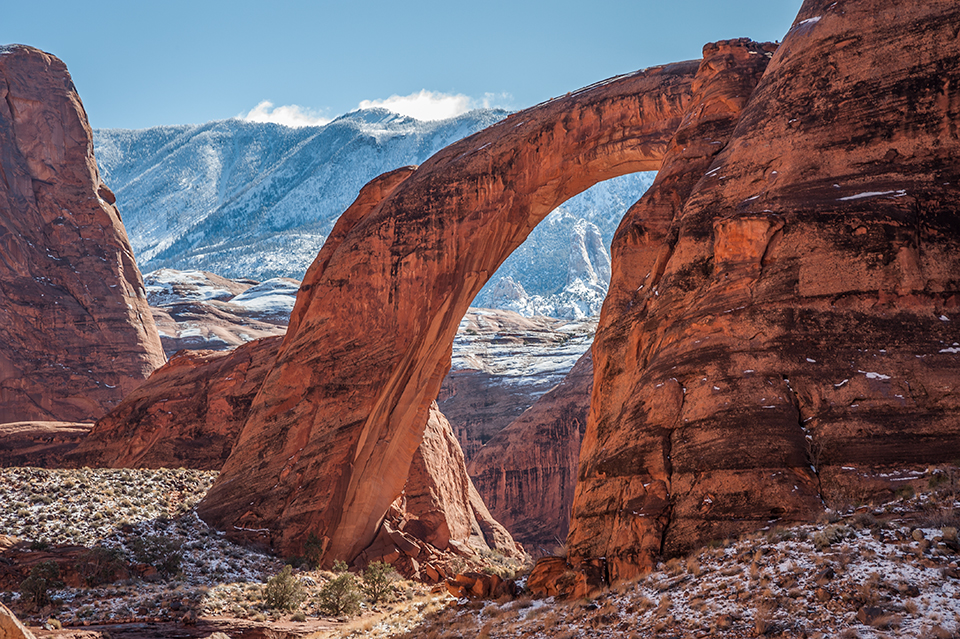
A storm clears from the landscape around Rainbow Bridge, leaving a snowy Navajo Mountain behind, on a February morning. Located just across the state line in Utah, Rainbow Bridge is protected by a national monument. Most visitors access it via boat and a short hike from Lake Powell, but a lengthy trail across the Navajo Nation (permit required) also exists. There are no roads to the bridge.
GARY LADD
INFORMATION: Rainbow Bridge National Monument, 928-608-6200 or nps.gov/rabr
MONUMENT VALLEY
“It was not a Navajo concept, this idea of adjusting nature to human needs. The Navajo adjusted himself to remain in harmony with the universe. When nature withheld the rain, the Navajo sought the pattern of this phenomenon — as he sought the pattern of all things — to find its beauty and live in harmony with it.”
—Tony Hillerman, “Listening Woman,” 1978
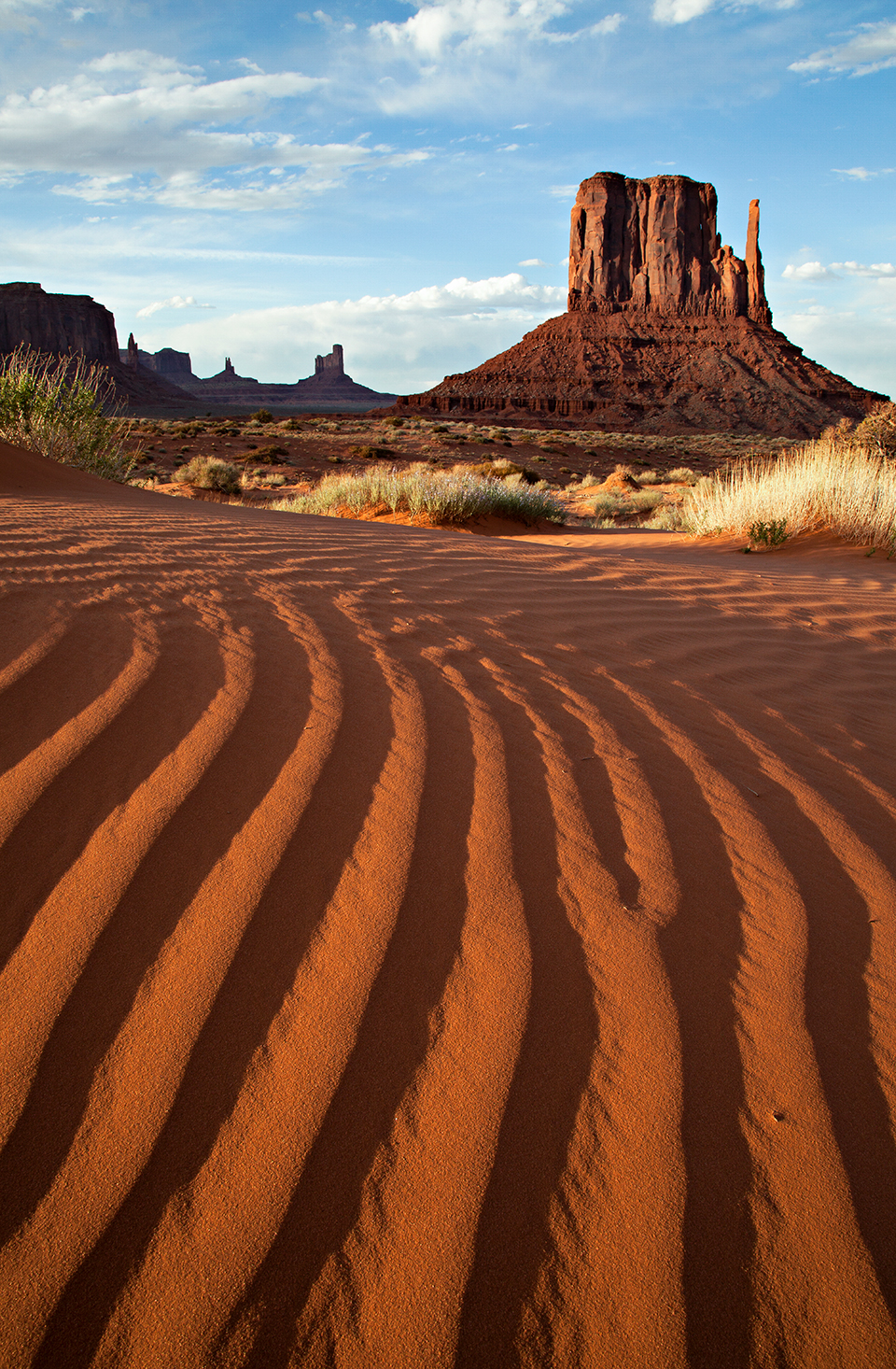
West Mitten Butte looms behind rippled sand dunes at Monument Valley Navajo Tribal Park, which straddles Arizona’s state line with Utah. A scenic loop drive, accessible in most passenger cars, is an ideal way to see Monument Valley’s sandstone landmarks from different perspectives. The drive begins and ends near the park’s visitors center and The View Hotel.
MARK FRANK
INFORMATION: Monument Valley Navajo Tribal Park, 435-727-5870 or navajonationparks.org

